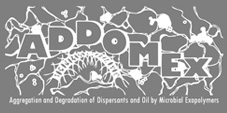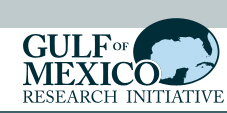People
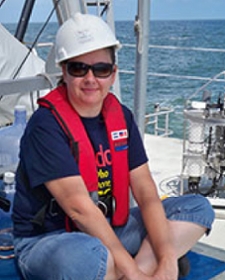
Dr. Antonietta Quigg
Dr. Quigg, Professor and Associate Vice President for Research and Graduate studies at Texas A&M University at Galveston. Since starting at A&M in 2003, she has participated in 42 research proposals (>21 million), acting as lead PI on 27 including the present project (>10 million). This has led to >70 publications, most of which have students and postdocs at lead authors. At any one time, she has several postdocs and technicians and typically 6-7 graduate students. Further, Quigg has spent over 150 days at sea in the Gulf of Mexico. Quigg has extensive experience leading and participating in multiple PI programs, including being responsible for all management aspects of the programs, writing reports and handling budgets, acting in effect as a program manager for these research programs. As the consortium director and chief scientific officer, she will lead this team towards an understanding of aggregation and degradation of dispersants and oil by microbial exopolymers (ADDOMEx). Quigg will bridge her expertise of phytoplankton ecophysiology with the chemists, biologists, engineers on the team to develop a process based understanding of this phenomenon. Quigg is currently involved in a range of projects from studying freshwater inflows and bioindicators in Galveston Bay, to mechanisms controlling hypoxia, and to lab studies on the impact of engineered nanomaterials and the potential for algal biofuels. Quigg has over 70 publications (Google H index 22). To learn more about the different research in the Quigg lab: www.tamug.edu/phytoplankton/
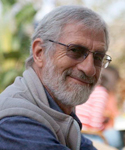
Dr. Peter H. Santschi
Dr. Santschi is a Regents Professor of Texas A&M University, and Director, Laboratory for Oceanographic and Environmental Research (LOER) and Coastal Zone Laboratory (CZL) and is involved in ADDOMEx as the Deputy Consortium Director. He will be involved in various aspects of the research on the role of exudates in oil dispersion, aggregation and fate, and will co-ordinate activities of exudate analysis. Dr. Santschi will work closely with lead investigators, postdocs and graduate students, and coordinates activities for EPS characterization and inter-laboratory collaborations. Dr. Santschi has over 280 publications (H score 69) in various topics in environmental and marine chemistry. Dr. Santschi currently is involved research projects on radionuclide binding to bio- and geopolymers in the ocean and in soils as well as on the role of exopolymeric substances as biosurfactants and radionuclide scavenging in the marine environment. To learn more, visit http://loer.tamug.edu/people/Santschi/index.html
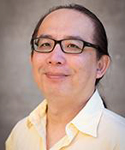
Dr. Wei-Chun Chin
Dr. Chin is a chemical engineer and involved in ADDOMex as a co-PI. Chin group at UC Merced has applied polymer physics, microfabrication, nanotechnology and engineering principles to study various biological systems, including marine microgel formation. The project for UC Merced team aims to utilize microfludic designs to investigate the impact of oil and dispersants on marine microbial community under various environmental conditions, including their individual physiological responses, evolution or species competition. In addition, various environmental factors that influence EPS and oil/dispersant interactions as well as marine gel (marine snow) formation will be studied with confocal microscopy, flow cytomter, atomic force microscopy and dynamic laser scattering. To learn more about the different research in the Chin lab: http://www.ucmerced.edu/content/wei-chun-chin

Dr. Zoe Finkel
Dr. Finkel is a Canada Research Chair in Marine Environmental Ecology and involved in ADDOMex as a co-PI. Dr. Finkel will be working with Dr. Quigg on the laboratory experiments and transcriptomic analyses of how individual phytoplankton species and communities respond to oil and dispersant under different environmental conditions. Dr. Finkel’s work focuses on how environmental and climate change interacts with physiological, ecological and evolutionary processes to influence phytoplankton communities over a variety of temporal and spatial scales. Dr. Finkel has over 40 peer-reviewed publications (H score 23) in marine environmental research. To learn more about the different research in the Finkel lab: http://mmab.ca/
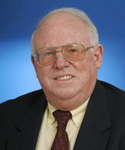
Dr. Patrick G. Hatcher
Dr. Hatcher is Batten Endowed Chair of Physical Sciences, Director Virginia Coastal Energy Research Consortium, Director College of Sciences Major Instrumentation Cluster, Professor of Chemistry and Biochemistry and involved in ADDOMex as a co-PI. Dr. Hatcher will be involved with advanced analytical aspects of the project aligned closely with the Santschi group to forge an understanding of how oil and Corexit influence suspended particulate matter from both laboratory and field sample collections. Hatcher has over 320 publications (Google H index 80). Dr. Hatcher currently is involved in numerous research projects focused on the formation of kerogen, petroleum, natural gas, dissolved and particulate organic matter in the oceans, and on humic substances. To learn more about the different research in the Hatcher lab: https://fs.wp.odu.edu/phatcher/
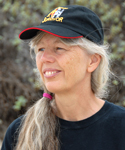
Dr. Uta Passow
Dr. Uta Passow is a Research Professor in Biological Oceanography and involved in ADDOMEx as a co-PI. Uta has been working in the Gulf of Mexico since the oil spill in 2010 and as the chair of the inter-consortia working group, MOSSFA, has introduced the scientific and response community to the role of marine snow as a transport mechanism of oil in marine systems. Within ADDOMEx, she will use a hierarchical approach of increasingly larger and more complex experiments to investigate the response of different autotrophic microbes to oil and dispersant in terms of their production of EPS (exopolymeric substances). Specifically the Passow lab will be responsible for the analysis of TEP (transparent exopolymer particles) and for roller table experiments. We will also participate in the mesocosm experiments. To learn more about the different research in the Passow lab: http://passowlab.msi.ucsb.edu

Dr. Jason B. Sylvan
Dr. Sylvan is Assistant Professor (Research) and involved in ADDOMex as a co-PI. He spent the majority of his dissertation studying eutrophication in the northern Gulf of Mexico and is excited to merge his more recent expertise in geomicrobiology with his earlier interest in the Gulf to study interactions between bacteria and archaea with phytoplankton, oil, dispersants and exopolymeric substances. He will be leading the analysis of the bacterial and archaeal data and will be involved with conducting the small-scale microchip experiments, the medium-scale roller table experiments and the large-scale mesocosm experiments. Dr. Sylvan has 18 peer-reviewed publications to date in oceanographic research. To learn more about the research in the Sylvan lab: https://ocean.tamu.edu/people/profiles/faculty/sylvanjasonb.html
Note - as of summer 2015, Sylvan will be an Assistant Professor at Texas A&M University, College Station

Dr. Terry L. Wade
terry@GERG.tamu.edu
Dr. Wade is the Deputy Director (GERG) and Research Professor of Oceanography and involved in ADDOMex as a co-PI. He will be involved with the field work aspects of the project. He will aid Dr. Knap in the dosing experiments and will be responsible for the oil chemistry laboratory work. Dr. Wade published his first paper on oil and the environment in 1972 and most recent in 2014. He has over 220 publications (H score 44). Dr. Wade currently is involved research projects in Antarctica and Qatar involving oil in sediments and organisms. To learn more about the different research at GERG: http://gerg.tamu.edu
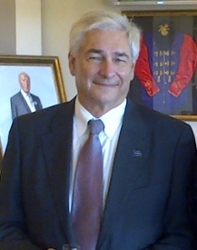
Dr. Anthony Knap
Dr. Anthony Knap is the James R. Whatley Endowed Chair in Geosciences, Professor of Oceanography and Director of Geochemical and Environmental Research Group (GERG) at Texas A&M University. He holds a PhD in Oceanography He has had extensive experience with both chemical and physical monitoring systems. He founded the Bermuda Atlantic Time-series Study (BATS) and was PI of Station S. He was the President and Director of the Bermuda Institute of Ocean Sciences for 25 years. GERG has a long history of work in the Gulf of Mexico, including the operation of a number of instrumented buoys (Texas Automated Buoy System – TABS) and other sustained monitoring systems in the Gulf of Mexico. He was the Chairman of the Health of the Ocean Committee for GOOS, co-chaired the Coastal Panel of GOOS resulting in the GOOS Coastal strategic plan and then the implementation Plan. He recently served on the Scientific Steering Committee for the Global Ocean Observing System (GOOS) and on the Executive Committee of the Partnership of Observations of the Global Ocean (POGO). He has served on Commercial company Boards and is presently a Director of Maritime Insurance Solutions, Ltd. He has recently been named to the National Academy of Sciences Gulf of Mexico Research Program Board. His role in ADDOMEx has been to design and build the mesocosms as well as the analysis and interpretation of the chemistry data with the biological processes. He is also a member of the management team.
Research Scientists

Dr. Kathleen A. Schwehr
Dr. Kathleen A. Schwehr, as an associate research scientist for the LOER and a lead investigator for ADDOMEx. She will also be the data manager for the ADDOMEx project. Dr. Schwehr will help oversee postdocs, graduate, and undergraduate students, as well as lead the physical chemical characterization of the EPS-Oil-Corexit mixtures. Dr. Schwehr has 9 years of experience in biogeochemical nutrient cycling in oceanographic and aquatic systems, and in the interaction of trace elements with natural organic matter and EPS. To learn more, visit http://loer.tamug.edu/people.htm

Dr. Andrew Irwin
Dr. Andrew Irwin (Department Head, Math & Computer Science, Mount Allison University) uses mathematical and statistical models to study phytoplankton physiology and ecology at the population and community level. I will be using bioinformatics tools to analyze RNA transcript data together with physiological data. We are seeking molecular evidence for phytoplankton physiological responses to oil and dispersants used during oil spills. We will use a combination of differential expression of transcripts and predicted gene function to develop a picture of physiological acclimation and stress responses. To learn more, visit http://mmab.ca/
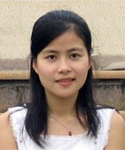
Dr. Chen Xu
Dr. Chen Xu, assistant research scientist and lead investigator for ADDOMEx, is responsible for day to day operations and management, as well as for EPS separation, purification, EPS and marine particles/aggregates characterization, in collaboration with the Hatcher Lab with several state-of-the-art instrumentation including NMR and ESI-FT-ICR-MS. Dr. Xu has more than ten years of experience in the studies of 1) biogeochemistry of natural organic matter in aquatic environments, in particular amphiphilic exopolymeric substances (EPS) excreted by microorganisms (algae and bacteria), their composition at the molecular level and how the composition of mobile or immobile colloidal carriers of radionuclides (e.g., 129I, 234Th, 239,240Pu, etc.) relates to removal from the water or immobility in soil and groundwater; 2) The application of natural (e.g., 238U, 234Th, 233Pa, 237Np) and man-made radionuclides (e.g., 137Cs, 129I, 239, 240Pu, 3H) as tracers and geochronometers to investigate fate and transport of NOM as well as inorganic and organic toxicants in the aquatic environment. To learn more, visit http://loer.tamug.edu/people.htm

Dr. Gerardo Gold
Texas A&M University, Department of Oceanography

Dr. Chi-Shuo Chen
National Tsing Hua University, Department of Biomedical Engineering and Environmental Sciences
Research Staff

Ms. Julia Sweet
Lab manager
University of California Santa Barbara, Marine Science Institute
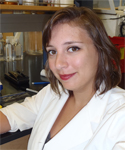
Ms. Rachel Windham
Lab manager
Texas A&M at Galveston, Department of Marine Biology

Jessica Hillhouse
Research Assistant
Texas A&M at Galveston, Department of Marine Biology
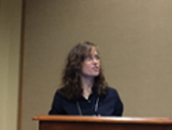
Morgan Beaver
Research Assistant
Texas A&M at Galveston, Department of Marine Sciences
Wei Xing
Research Assistant
Texas A&M at Galveston, Department of Marine Sciences
Debra Defreitas
Quality Control
Texas A&M University, Geochemical and Environmental Research Group
William Mackan
Texas A&M University, Geochemical and Environmental Research Group
Lisa McDonald
Texas A&M University, Geochemical and Environmental Research Group
Kusumica Mitra
Nutrient Analysis
Texas A&M University, Geochemical and Environmental Research Group
Stephen Sweet
Texas A&M University, Geochemical and Environmental Research Group
Post-Doctoral Fellows
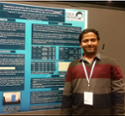
Gopal Bera
Texas A&M University, Geochemical and Environmental Research Group
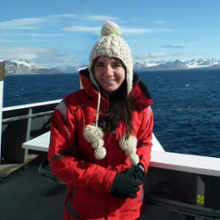
Laura Bretherton
Texas A&M University at Galveston, Department of Marine Biology

Chris Brown
Mount Allison University, Department of Geography and Environment
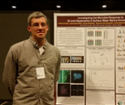
Shawn Doyle
Texas A&M University, Department of Oceanography
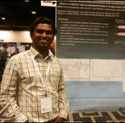
Manoj Kamalanathan
Texas A&M University at Galveston,Department of Marine Biology
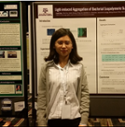
Luni Sun
Texas A&M University at Galveston, Department of Marine Sciences

Andrew Wozniak
Old Dominan University, Department of Chemistry and Biochemistry
Meng-Hsuen (James) Chiu
University of California Meced, Department Bioengineering
Yue Liang
Mount Allison University, Department of Geography and Environment
Lin Peng
Texas A&M University at Galveston, Department of Marine Sciences
Jose Sericano
Texas A&M University, Geochemical and Environmental Research Group
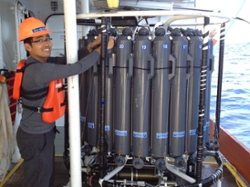
Hernando P. Bacosa
Texas A&M University at Galveston, Department of Marine Biology
Graduate Students
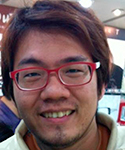
Shih-Ming Tsai
PhD student in Dr. Chin's lab, have both biotechnology and material science background. His has experiment on lab-on-chip design and fabrication for microfluidic application on bioreactor. Currently he works on the fabrication and design of microfluidic devices for environmental stress selection system.

Dawei Shi
Texas A&M University, Oceanography Department

Jennifer Genzer
I recently graduated from Texas A&M University with my bachelor’s in Biology and an Oceanography minor. I focused my undergraduate research project on phytoplankton community structure along the Texas coast using an Imaging FlowCytobot in Dr. Lisa Campbell’s lab. I joined Dr. Quigg’s lab to work on the Aggregation and Degradation of Dispersants and Oil by Microbial Exopolymers (ADDOMEx) project funded by Gulf of Mexico Research Initiative where we will be analyzing the effects of oil on phytoplankton and their production of marine snow. I am also helping with the new Imaging FlowCytobot by collecting samples and identifying phytoplankton. Prior to starting my Master’s degree, I worked as a Research Assistant for over a year on the ADDOMEx project and helped run and design the experiments. Now for my thesis, I have narrowed my focus to studying the effects of ocean acidification and oil on diatom aggregation and physiological responses.
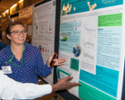
Maya Morales-McDevitt
Texas A&M University, Department of Oceanography
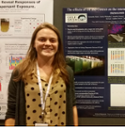
Samantha Setta
I’m interested in the community response of phytoplankton to both anthropogenic effects and global climate change. I received my bachelor’s in Biology with a focus on Marine Biology in 2014 from the University of Texas at Austin. After graduating, I worked on a project investigating the use of phytoplankton for biofuels through Texas A&M Agrilife. Before moving to Galveston, I studied the effects of the Deepwater Horizon Oil Spill on the biogeochemistry and net primary productivity of Louisiana Salt Marshes as a research assistant in the Roberts Lab at the Louisiana Universities Marine Consortium (LUMCON). I’m currently a Master’s student in the Phytoplankton Dynamics Laboratory investigating the effects of crude oil and dispersants on the community structure and transcriptomes of both phytoplankton and microbes as part of the Aggregation and Degradation of Dispersants and Oil by Microbial Exopolymers (ADDOMEx) project.

Emily Whitaker
Texas A&M University, Department of Oceanography
Gen Mei
Texas A&M University, Department of Oceanography
Undergraduate Students
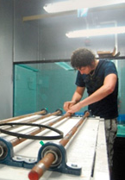
Oscar Agueda
Texas A&M University at Galveston, Department of Marine Sciences

Jamie Albach
Texas A&M University at Galveston, Department of Marine Sciences
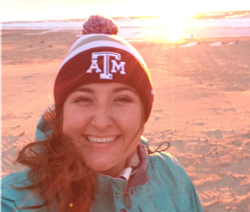
Rachel Hamrock
Texas A&M University at Galveston, Department of Marine Biology

Savannah Mapes
Texas A&M University at Galveston, Department of Marine Biology

Andrew Mondragon
Texas A&M University at Galveston, Department of Marine Biology
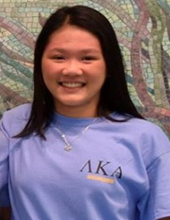
Michelle Nguyen
Texas A&M University at Galveston, Department of Marine Biology
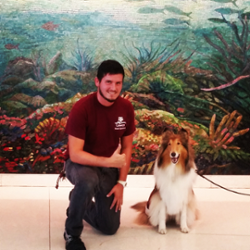
Austin Perez
Texas A&M University at Galveston, Department of Marine Biology
Isabel Alessio
Texas A&M University, Department of Oceanography
Kirana Bercich
University of Texas at Dallas, School of Engineering & Computer Science
Scott Cecil
Texas A&M University, Department of Biological and Environmental Sciences
Cynthia Garcia
University of California Merced, Department of Bioengineering
Andres Le
University of California Merced, Department of Bioengineering
Lucas Mackan
Texas A&M University, Department of Chemistry
Priscilla Prem
Old Dominion University, Department of Chemistry
Samantha Shannon
Texas A&M University, Veterinary Medicine Department
Angelo Sibal
University of California Merced, Department of Bioengineering
John Snelling
Texas A&M University, Department of Geosciences
Christian Tran
University of California Merced, Department of Bioengineering
Alumni

Josh Gunn

Dr. Saijin Zhang

Ms. Marcella Nunez

Cameron Jackson

Matthew Gehring
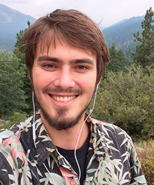
Thomas Jarrett

Elisa Romanelli

Dr. Alicia Williams
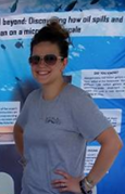
Kendra Kopp
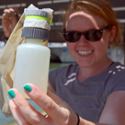
Jillian Gillmartin

Russell Cole

Veronica De Pascual
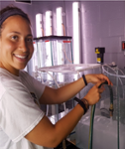
Reyna Nolan

Thomas Mathwig

Courtney Kneupper
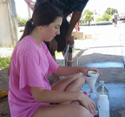
Caitlyn Quigg

Jocelyn Simmons
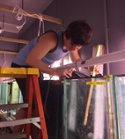
Aaron Quigg
Xinxin Li
Wassim Obeid
Lin Youmin
Christine Jiang
Lilianna Wolf
